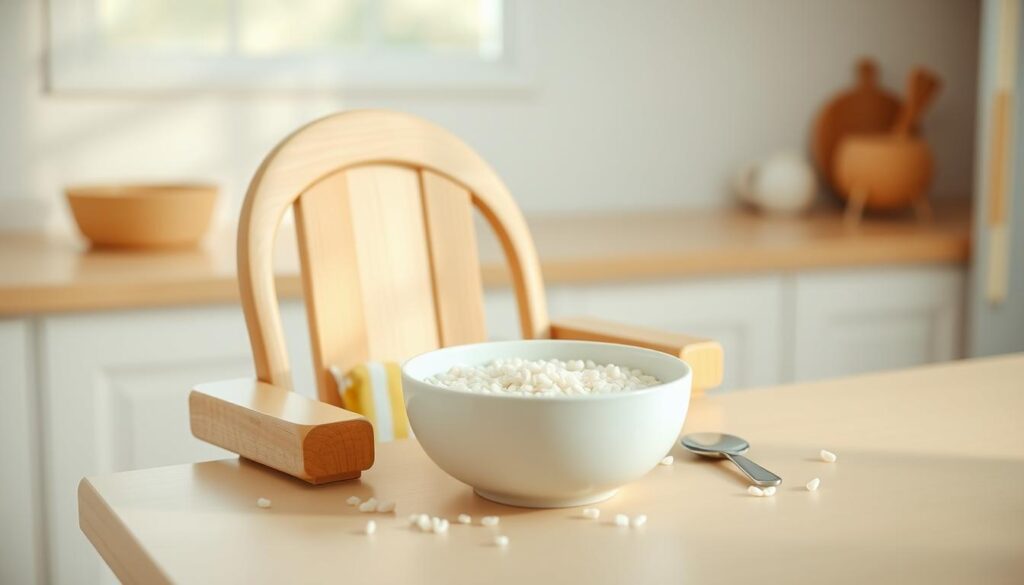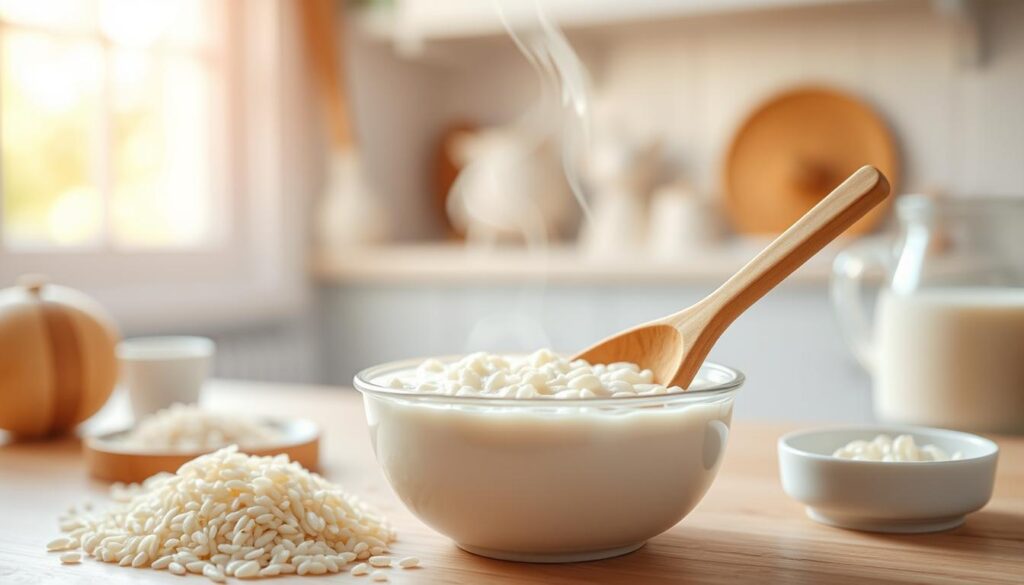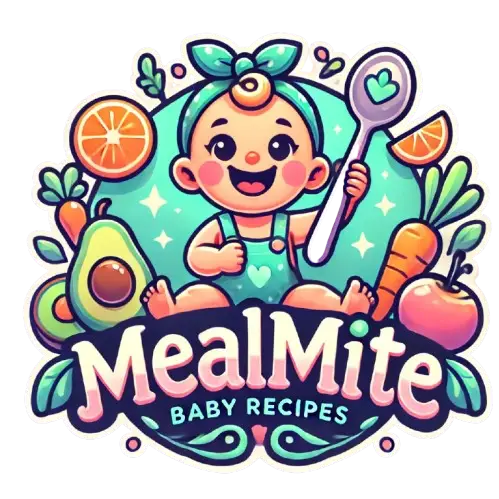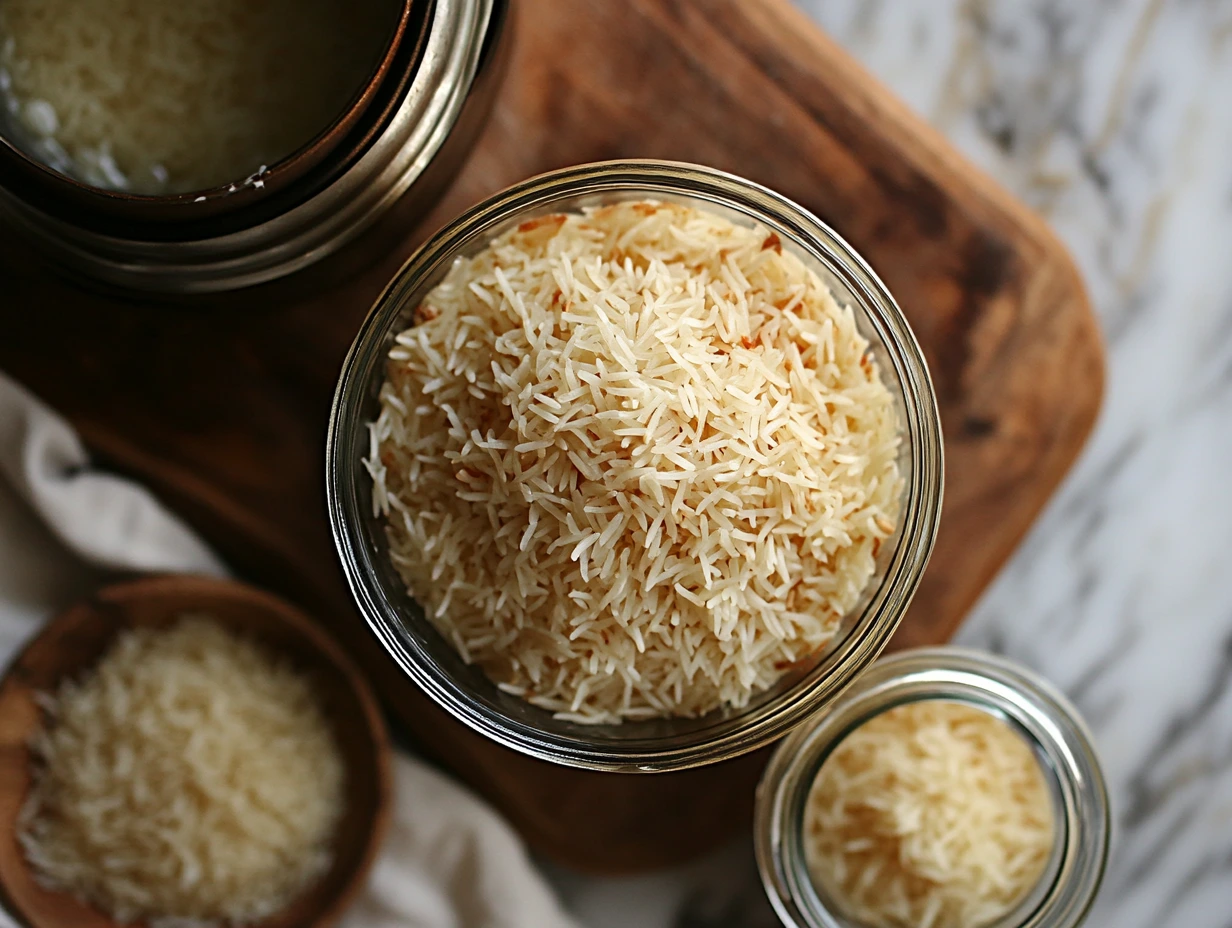Did you know rice is a key food for energy in growing babies? As a parent, you want the best for your baby. Making homemade cereal is a great choice. It’s easy to make and good for your baby’s health.
Table of Contents

Key Takeaways
- Learn how to make delicious homemade rice cereal for your baby in this easy-to-follow guide.
- Rice is a staple food rich in carbohydrates, essential for energy, particularly in growing infants.
- Making homemade rice cereal is a simple and cost-effective way to provide your baby with a nutritious and healthy meal.
- How to make rice cereal for baby is a common question among parents, and we will cover the benefits and steps involved in making the cereal.
- Rice for infants is a popular choice among parents, and with our guide, you can make a nutritious and healthy meal for your baby.
- Our guide will cover the essential tools and ingredients needed to make homemade rice cereal.
- We will also provide tips on how to make rice cereal for baby, including the ratio of rice cereal to water and the cooking time.
Benefits of Homemade Cereal for Your Baby
As a parent, you want the best for your baby. Homemade baby cereal is a great choice. It’s healthier than store-bought options because you can pick the ingredients.
Homemade cereal is cost-effective. You can buy ingredients in bulk and make a lot at once. This way, you avoid additives found in store-bought cereals. The American Academy of Pediatrics says introducing solids, like cereal, at 6 months is good for your baby.
Nutritional Advantages Over Store-Bought Options
Homemade cereal is more nutritious than store-bought. You can adjust the water and rice ratio. This ensures your baby gets the right mix of carbs, protein, and fiber. Here’s what homemade cereal offers per serving:
| Nutrient | Amount per serving |
|---|---|
| Calories | 80 kcal |
| Carbohydrates | 17g |
| Protein | 2g |
| Fat | 1g |
Cost-Effectiveness of Homemade Baby Food
Homemade baby food, like cereal, is cheaper than organic store-bought options. Buying ingredients in bulk saves money. For example, a bag of Lundberg rice can make many batches of cereal.
Control Over Ingredients and Quality
When you make your baby food, you control what goes into it. This is key, especially for avoiding arsenic in baby food. Homemade cereal lets you keep arsenic levels low, meeting FDA standards.
Essential Tools and Ingredients Needed
To start making baby cereal, you need a few key tools and ingredients. It’s important to have the right stuff to make it. You’ll need a medium saucepan, a fine-mesh colander, and short-grain brown rice. Also, you’ll need water and a blender or food processor to make the rice smooth.
Some important ingredients and tools to remember include:
- A medium saucepan for cooking the rice
- A fine-mesh colander for draining excess water
- Short-grain brown rice, which is preferred for its softer texture
- Water, which is used for cooking the rice
- A blender or food processor, which is necessary for achieving the right consistency
When making baby cereal, think about what’s best for your baby. The right tools and ingredients make a big difference. They help you create a meal that’s both nutritious and healthy for your little one.
With these essential tools and ingredients, you’re ready to make delicious baby rice cereal. Always put your baby’s health and safety first when trying new foods. If you have any questions or concerns, talk to your pediatrician.
Selecting the Right Type of Rice for Your Baby
Choosing the right rice for your baby is important. Brown rice is better than white rice because it has more fiber and nutrients. But, brown rice has more arsenic than white rice.
When making rice cereal for your baby, think about arsenic levels. White basmati rice and sushi rice from the U.S. have less arsenic. Soaking and rinsing rice can also lower arsenic levels.
- Type of rice: Brown rice, white rice, or a combination of both
- Level of arsenic: Choose rice with lower arsenic levels
- Grain size: Short-grain brown rice is less starchy and easier to digest
By choosing the right rice and cooking it correctly, you can make a healthy cereal. Always put your baby’s health first when trying new foods.
| Type of Rice | Level of Arsenic | Grain Size |
|---|---|---|
| Brown Rice | Higher | Short-grain |
| White Rice | Lower | Long-grain |
How to Make Rice Cereal for Baby: Step-by-Step Guide
To make cereal for infant a great first food, follow this simple guide. Start by rinsing the rice in a fine-mesh colander. Then, cook it in a medium saucepan with water. Use 2 cups of water for every 1/4 cup of rice.
Bring the water to a boil before adding the rice. Cook until the rice is soft and the water is absorbed.
Once the rice is cooked, blend it into a fine puree. Use a blender or food processor for this. This makes the texture smooth, which is good for your baby’s digestion.
Then, store the cereal in the fridge for up to 3 days or freeze it for later. When you’re ready to serve, mix 1 teaspoon of cereal with 3/4 cup of water. This makes the cereal liquid.

- Use short-grain brown rice for its nutritional value and softer cooking characteristics.
- Store whole grains in a cool, dry place to prevent rancidity.
- Introduce rice cereal at around 6 months of age, as it’s traditionally the first complementary food given to American infants.
By following this guide, you can give your baby a nutritious first food. Always check with your pediatrician before introducing new foods to your baby’s diet.
Proper Storage and Reheating Methods
Storing and reheating rice cereal for babies is key. You can keep it in the fridge for up to 4 days or freeze it for later. Freezing it in cubes makes reheating easy.
To reheat frozen cubes, use the microwave in 30-second bursts, stirring each time. Always check the cereal for spoilage before serving. This keeps the cereal safe and nutritious for your baby.
- Refrigerate cooked rice cereal for up to 4 days
- Freeze-cooked rice cereal for up to 4 months
- Reheat frozen rice cereal cubes in a microwave using 30-second intervals
- Always check for signs of spoilage before serving
Following these steps ensures your baby’s rice cereal stays safe and healthy. Always label and date the stored cereal. This helps you keep track of when to use it.
| Storage Method | Duration |
|---|---|
| Refrigeration | Up to 4 days |
| Freezing | Up to 4 months |
Adjusting Consistency and Portion Sizes
When you start giving homemade rice cereal to your baby, it’s key to adjust the mix and amount. Start with a thinner mix and make it thicker as your baby gets used to eating solids.
Think about your baby’s hunger and what they need nutrition-wise. Begin with a small amount, like 1 tablespoon of cereal with breastmilk or formula. Then, slowly add more cereal to the mix.
Here are some tips to keep in mind:
- Start with a single-ingredient cereal, such as rice cereal, to monitor for allergies.
- Gradually introduce new ingredients and flavors to prevent overwhelming your baby’s taste buds.
- Adjust the portion sizes based on your baby’s appetite and nutritional needs.
Always talk to your pediatrician or healthcare professional for advice on adjusting the consistency and portion sizes of homemade rice cereal for your baby.
| Age | Consistency | Portion Size |
|---|---|---|
| 4-6 months | Thin | 1-2 tablespoons |
| 7-9 months | Thicker | 2-3 tablespoons |
| 10-12 months | Thickest | 3-4 tablespoons |
Adding Flavors and Nutritional Boosters
As your baby grows, you can start adding flavors and nutritional boosters to their baby cereal. This makes the cereal more appealing and nutritious. You can add pureed fruits and vegetables, like apples and carrots, to the cereal. Remember to always consult with a pediatrician or healthcare professional before introducing any new foods or ingredients to your baby’s diet.
Some safe first-food combinations include:
- Pureed fruits, such as apples and bananas
- Pureed vegetables, such as carrots and sweet potatoes
- Spices and seasonings, such as cinnamon and nutmeg
You can also add other nutritional boosters, such as:
- Chia seeds, which are rich in iron and fiber
- Almond butter or pumpkin butter, which are rich in healthy fats and protein
When adding flavors and nutritional boosters to your baby’s rice cereal, be sure to introduce them one at a time and in small amounts to monitor for any signs of allergy or intolerance. By adding these flavors and nutritional boosters, you can help make your baby’s rice cereal more nutritious and delicious.
Common Mistakes to Avoid
When making rice cereal for infants, it’s key to know what to avoid. One big mistake is not controlling the temperature right. This can cause bacteria to grow and make the cereal unsafe. Always make sure to store and reheat the cereal at the right temperature.
Another mistake is getting the texture wrong. This can happen if the cereal isn’t blended well or if it’s too thick or thin. To get it just right, mix 1/4 cup of rice cereal with 1 cup of water and cook for 10 minutes. You can also add fruits or savory ingredients to make it taste better and be more nutritious.
Don’t forget about storage mistakes. Always keep the cereal in a clean, airtight container. This helps prevent contamination and spoilage. By avoiding these common mistakes, you can make sure your baby’s rice cereal is both safe and healthy.

- Stick to a single ingredient, like brown rice, to lower allergy and contamination risks.
- Grind the rice into a fine powder using a blender or food processor for the right texture.
- Keep the cooked rice cereal in the fridge for up to 1 week and the brown rice powder for up to 1 month.
| Mistake | Consequence | Prevention |
|---|---|---|
| Temperature control issues | Bacterial growth and contamination | Store and reheat at correct temperature |
| Texture problems | Difficulty in digestion | Mix with correct ratio of water and cook for 10 minutes |
| Storage errors | Contamination and spoilage | Store in clean and airtight container |
Conclusion: Starting Your Baby’s Solid Food Journey
Starting your baby’s solid food journey with rice cereal is a smart move. It’s mild and easy to digest, making it perfect for first-time eaters. By following the guide in this article, you can make sure your baby’s rice cereal is safe and tasty.
It’s best to introduce solid foods, like iron-fortified rice cereal, around 6 months. This is when their natural iron stores start to run low. Moving from thin purees to thicker textures between 6 to 9 months helps them get used to different foods.
Adding flavors and nutrients to rice cereal can make it more exciting for your baby. With a bit of effort and patience, you can help your child enjoy healthy foods for years to come.
FAQ
What are the benefits of homemade rice cereal for my baby?
Homemade rice cereal is better than store-bought for several reasons. It’s more nutritious, saves money, and lets you choose the ingredients.
What tools and ingredients do I need to make rice cereal for my baby?
You’ll need a medium saucepan, a fine-mesh colander, brown rice, water, and a blender or food processor.
What type of rice is best for making baby rice cereal?
Brown rice is better than white rice because it has more fiber and nutrients. Choose organic rice for better quality. Short-grain brown rice is also good because it’s less starchy and easier to digest.
How do I make rice cereal for my baby?
First, rinse the rice. Then, cook it in a saucepan with water. Finally, blend it into a fine puree with a blender or food processor.
How should I store and reheat the rice cereal?
Store the cereal in the fridge for up to 3 days or freeze it for later. When reheating, make sure it reaches 165°F (74°C) to keep it safe.
How can I adjust the consistency and portion sizes of the rice cereal for my baby?
Adjust the consistency and portion sizes based on your baby’s age and needs. Younger babies like it thinner, while older ones prefer thicker. Adjust the amount based on their appetite and nutritional needs.
What can I add to the rice cereal to make it more appealing and nutritious?
Add pureed fruits and veggies like apples and carrots. You can also add spices and seasonings like cinnamon and nutmeg to make it tastier and more nutritious.
What are some common mistakes to avoid when making rice cereal for my baby?
Avoid temperature control issues, texture problems, and storage errors. Make sure to store and reheat the cereal properly to prevent bacterial growth and keep the right consistency.

